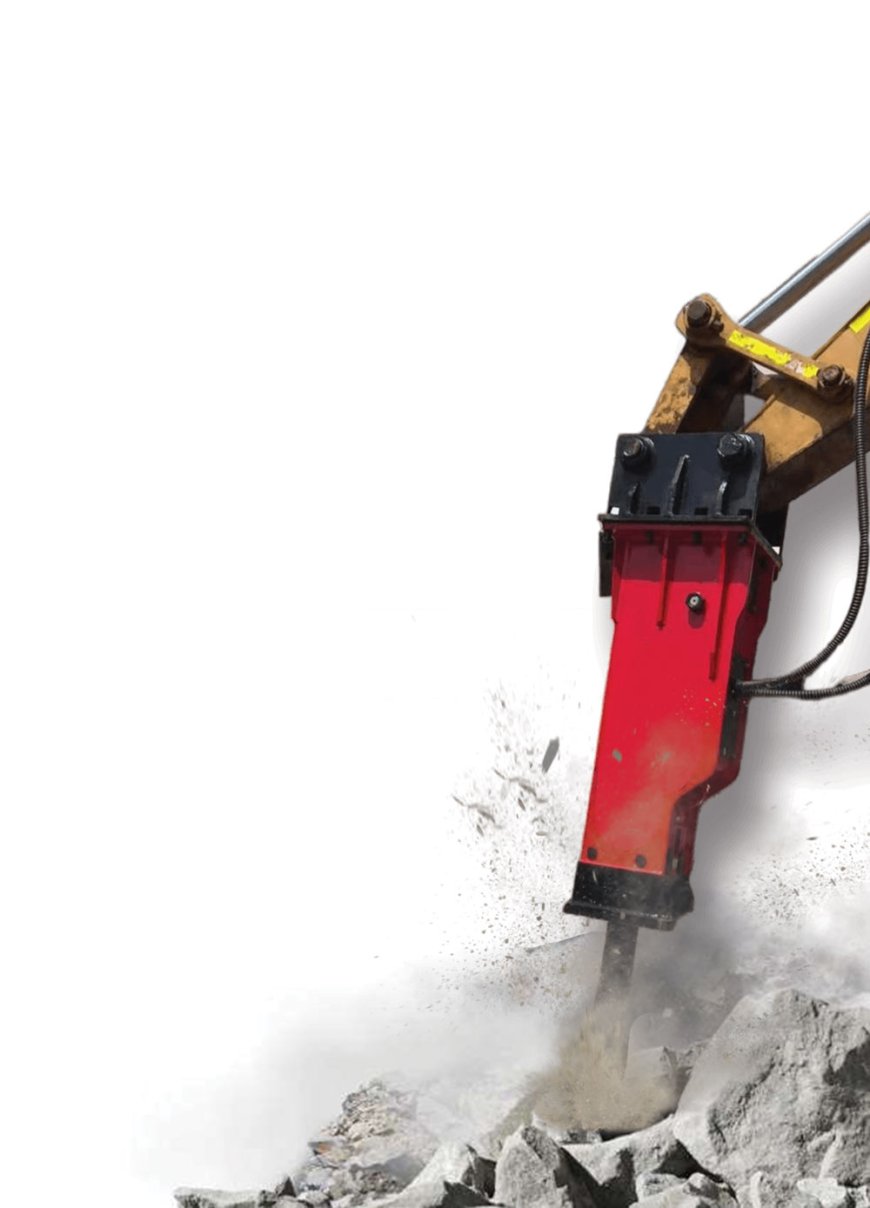INNOVATIONS in HYDRAULIC HAMMER TECHNOLOGY

As the construction and mining industries continue to evolve, so too does the technology that supports them. Hydraulic hammers, crucial tools in these sectors, are undergoing significant advancements aimed at increasing efficiency, reducing costs, and minimizing environmental impact. As we move through 2024, several key innovations in hydraulic hammer technology are expected to shape the future of these industries. This blog explores the most exciting developments on the horizon.
Market Overview
Hydraulic hammers, essential in construction and demolition activities, are robust percussive tools powered by hydraulic systems. They deliver high-impact force to break through tough materials like concrete and rocks efficiently. The global hydraulic hammer market is witnessing steady growth, driven by expanding construction projects worldwide. According to Persistence Market Research’s projections, the global market for hydraulic hammer is expected to rise from US$ 1.5 Bn in 2024 to US$ 2.6 Bn by the end of 2033. The market is anticipated to secure a CAGR of 5.9% during the forecast period from 2024 to 2033.
Enhanced Energy Efficiency
One of the primary focuses of innovation in hydraulic hammer technology is energy efficiency. Manufacturers are developing new designs and materials that reduce energy consumption without compromising performance. Advanced materials, such as high-strength alloys and composites, are being utilized to create lighter yet more durable components. This not only reduces the energy required to operate the hammer but also extends its lifespan, leading to lower maintenance costs.
Moreover, modern hydraulic systems are being equipped with energy recovery features. These systems can capture and store energy generated during the hammer’s operation, which can then be reused. This reduces the overall energy demand and contributes to a more sustainable operation.
Smart Technology Integration
The integration of smart technology is another significant trend in hydraulic hammer innovation. In 2024, we can expect to see more hydraulic hammers equipped with sensors and IoT (Internet of Things) capabilities. These smart hammers can collect and analyze data in real time, providing operators with valuable insights into performance and potential issues.
For instance, sensors can monitor parameters such as pressure, temperature, and vibration. This data can be used to optimize the hammer’s operation, ensuring it performs at its best while avoiding unnecessary wear and tear. Additionally, predictive maintenance systems can be implemented to identify potential problems before they lead to costly breakdowns, thus improving overall efficiency and reducing downtime.
Noise and Vibration Reduction
Noise and vibration are significant concerns in the operation of hydraulic hammers, particularly in urban areas where construction noise can be a major nuisance. Innovations in damping technology are being developed to address these issues. Advanced damping materials and designs can significantly reduce the noise and vibration produced by hydraulic hammers, making them more suitable for use in noise-sensitive environments.
Moreover, the development of quieter hydraulic pumps and more efficient power transmission systems contributes to a reduction in noise levels. These advancements not only benefit the surrounding environment but also improve the working conditions for operators, reducing the risk of hearing damage and fatigue.
Environmental Considerations
With increasing emphasis on sustainability, hydraulic hammer manufacturers are focusing on reducing the environmental impact of their products. One approach is the development of hammers that use biodegradable hydraulic fluids. Traditional hydraulic fluids can pose a significant environmental risk if leaked or spilled, but biodegradable alternatives minimize this risk while still providing excellent performance.
Additionally, improvements in the efficiency and precision of hydraulic hammers contribute to reduced fuel consumption and emissions. More efficient hammers require less energy to operate, which translates to lower fuel use and reduced greenhouse gas emissions. These advancements are crucial as industries strive to meet stricter environmental regulations and reduce their carbon footprint.
Increased Versatility and Adaptability
Modern construction and mining projects often require equipment that can adapt to various tasks and conditions. In 2024, we can expect hydraulic hammers to become more versatile and adaptable. Modular designs are becoming more common, allowing operators to easily change out components and adjust the hammer’s configuration to suit different applications.
Furthermore, the development of adjustable impact settings enables operators to fine-tune the hammer’s performance for specific tasks. Whether it’s breaking through hard rock or delicately chipping away at concrete, adjustable settings ensure that the hammer operates at optimal efficiency for the task at hand. This adaptability not only enhances performance but also extends the lifespan of the hammer by reducing unnecessary stress and wear.
Integration with Autonomous Systems
Autonomous and semi-autonomous machinery is rapidly advancing in the construction and mining industries, and hydraulic hammers are no exception. In 2024, we can expect to see more hydraulic hammers integrated with autonomous systems. These systems can operate the hammers with minimal human intervention, improving efficiency and safety.
For example, autonomous excavators equipped with hydraulic hammers can perform repetitive tasks such as breaking up concrete or rock with high precision and consistency. This not only speeds up the work but also reduces the risk of operator fatigue and human error. As autonomous technology continues to advance, the role of hydraulic hammers in these systems will likely expand, further revolutionizing the industry.
The future of hydraulic hammer technology in 2024 looks promising, with numerous innovations poised to enhance efficiency, reduce environmental impact, and improve safety. From energy-efficient designs and smart technology integration to noise reduction and increased versatility, these advancements are set to transform the construction and mining industries. As manufacturers continue to push the boundaries of what hydraulic hammers can achieve, we can look forward to a future where these essential tools are more powerful, efficient, and environmentally friendly than ever before.
Persistence Market Research








